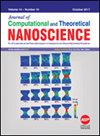ECG Classification Framework for Cardiac Disease Prediction Using Nonlinear Vector Decomposed Neural Network
Q3 Chemistry
Journal of Computational and Theoretical Nanoscience
Pub Date : 2020-12-01
DOI:10.1166/JCTN.2020.9453
引用次数: 0
Abstract
Early detection of heart disease may prevent myocardial infarction. Electrocardiogram (ECG) is the most widely used signal in clinical practice for the diagnosis of cardiovascular diseases such as arrhythmias and myocardial infarction. Human interpretation is time-consuming, and long-term ECG records are difficult to detect in small differences.Therefore, automated recognition of myocardial infarction using a Computer-Aided Diagnosis (CAD) system is the research interest, which can be used effectively to reduce mortality among cardiovascular disease patients. The most important step in the analysis of complex R-peak/QRS signals using an automated process of ECG signal. To automate the cardiovascular disease detection process, an adequate mechanism is required to characterize ECG signals, which are unknown features according to the similarities between ECG signals. If the classification can find similarities accurately and the probability of arrhythmia detection increases, the algorithm can become an effective method in the laboratory. In this research work, a new classification strategy is proposed to all the more precisely order ECG signals dependent on a powerful model of ECG signals. In this proposed method, a Nonlinear Vector Decomposed Neural Network (NVDN) is developed, and its simulation results show that this classifier can isolate the ECGs with high productivity. This proposed technique expands the exactness of the ECG classification concerning increasingly exact arrhythmia discovery.基于非线性向量分解神经网络的心电分类框架
早期发现心脏病可以预防心肌梗塞。心电图(Electrocardiogram, ECG)是临床上应用最广泛的用于诊断心律失常、心肌梗死等心血管疾病的信号。人工解读是费时的,而且长期的心电记录很难在微小的差异中检测出来。因此,利用计算机辅助诊断(CAD)系统对心肌梗死进行自动识别是研究的方向,可以有效地降低心血管疾病患者的死亡率。分析复杂r峰/QRS信号最重要的一步是采用心电信号的自动处理。为了实现心血管疾病检测过程的自动化,需要一种适当的机制来表征心电信号,根据心电信号之间的相似性,心电信号是未知的特征。如果分类能准确地找到相似点,心律失常检测的概率增加,该算法可以成为实验室中有效的方法。在本研究中,提出了一种新的基于强大的心电信号模型的心电信号分类策略。在该方法中,提出了一种非线性向量分解神经网络(NVDN),仿真结果表明,该分类器可以有效地分离出脑电图。这一提出的技术扩大了心电图分类的准确性,涉及越来越精确的心律失常发现。
本文章由计算机程序翻译,如有差异,请以英文原文为准。
求助全文
约1分钟内获得全文
求助全文
来源期刊

Journal of Computational and Theoretical Nanoscience
工程技术-材料科学:综合
自引率
0.00%
发文量
0
审稿时长
3.9 months
期刊介绍:
Information not localized
 求助内容:
求助内容: 应助结果提醒方式:
应助结果提醒方式:


